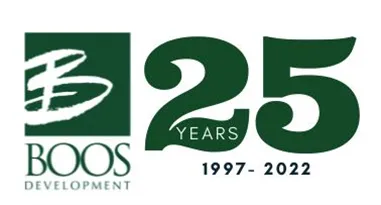Home » Dysautonomias » Live Demonstration Autonomic Function Tests Part 4: Stand Test with Patient Jade
Live Demonstration Autonomic Function Tests Part 4: Stand Test with Patient Jade
In this video Dr. Singer and Mr. David Sletten demonstrate a stand test with a sample patient.
Mr. David Sletten: And again, because we don’t have a tilt table, we’re just going to do a stand test. What we would normally do is Jade would be supine, for, through the Q-Sweat, deep breathing, and Valsalva so we would have already had our baseline for that. If we didn’t, depending upon the protocol, either 5 or 10 minutes, sometimes up to 20 in the supine position, then what we would do is we would tilt that up to 70 degrees, monitor that heart rate and blood pressure for 5 minutes or 10 minutes depending upon the referring indication. Typically, what we use for those just as a guide would be orthostatic intolerance would be a ten-minute tilt, POTS in anybody under the age of 18, otherwise most of the other referrals that we get unless it’s specifically marked would just be a five-minute tilt.
Mr. Sletten: We normally take blood pressures at one-minute and four-minutes and the baseline just to know what we’re doing right before we tilt them up and then once we’ve tilted them we’ll take them at 30 seconds, 1, 2, 3 minutes and then 5 minutes, 7, 9 depending upon how long that tilt is. Then we’ll return that patient back to supine, let them rest for 3 minutes and normally we would take one blood pressure before we release them just to be sure that if there was any abnormalities, that they’re back to baseline before they go out the door.
Dr. Wolfgang Singer: The reason we are taking the manual blood pressure is we tend to not rely on the continuous blood pressure monitoring for the absolute pressures. As Toni just mentioned to me, she is getting 120 over something reading over 150. This is really not meant to be an absolute blood pressure recording for you. This shows trends over time and it shows particularly short-term trends like for the Valsalva maneuver, it’s perfect for that, but actual blood pressure for the analysis if someone has orthostatic hypotension or not, I would never rely on this and I always go with a manual blood pressures.
Toni: So, like when I’m in the lab especially for doing a drug study and we want to see the change, we also try to get them to match though. So, I palpated his pressure and I palpated it at 118 but he says that he’s really cold, so again that can make you vasoconstrict your hands.
Mr. Sletten: One of the other things that we can do with this device as well is we can actually retake an upper arm cuff and just see if maybe this thing has drifted due to the Valsalva maneuver from him standing up and sitting down, it could’ve moved a little bit on his finger, so I am just going to go do that and see if we can actually get a little bit closer of a blood pressure here for him.
Toni: And I think, I mean, he’s like ice and we’ve warmed up both hands and you know…
Mr. Sletten: Well, no in our lab we keep at 78 degrees, so room temperature is extremely important for these reasons. So, it’s recalibrating and is actually showing now 135/77.
Mr. Sletten: This is where two technicians are extremely important for the head up tilt. We would have one person with our clipboard who’s making note of the manual blood pressures and at the same time recording what’s coming from the device so that we can compare the two and we also are writing down the heart rate, any symptoms. One technician is really taking the blood pressures and watching the patient to make sure that we’re not seeing, you know, skin color changes or visual cues that we might pick up on that the patient is starting to feel a blood pressure drop. While the other technician is really responsible for writing down the values and being sure we’re collecting the data that we need to. They’re also normally the ones that are controlling the foot pedal or the remote control to tilt the table up and down as well, so this can get to be kind of a hectic time, especially when you’re noticing that huge blood pressure drop in these old aged patients and you’re wanting to collect the information as fast as you can but also want to be as safe as possible for the patient.
Toni: So, it’s important like sometimes we, you know, “Can you come and do the foot pedal?” I have a problem with that because if one of us are taking blood pressures and the blood pressures are 60/40 and they’re white but they don’t know that they don’t have symptoms, you need this person over here to know a blood pressure pattern just as well as the person taking the blood pressures because they also need to know when to make that decision when they are trying to palpate and get a blood pressure and if they see the heart rate, everything drop down they need to be able to go back and do that.
Dr. Singer: They can nicely see now where it took the calibration, oops, they cut off the circulation for a few seconds and then that’s where the recalibration occurred. So that’s the current and more accurate blood pressure now and as far as I am concerned, we can go ahead.
Mr. Sletten: So normally like I said we would be having a clipboard taking things down and again the table would normally come up, but we’re going to go ahead and make a mark and ask Jade to stand up, go that way.
Dr. Singer: Just imagine that fancy tilt table going up now.
Toni: And with the arm out but if they have a problem, you can always stay here.
Mr. Sletten: You okay, Jade?
Jade: Yeah.
Mr. Sletten: Okay.
Anonymous: After the machine calibrates, can you often find some blood pressures that are inconsistent?
Mr. Sletten: It depends, it did on here but again he had a really high blood pressure coming into it and we knew based off the manual that, that was inaccurate, so one way to do that is to do that cuff. No, I have a feeling it’s due to, mainly due to probably some vasoconstriction going on because it’s cold and again most of these blood pressure devices are very sensitive to vasoconstriction. So that’s where the rice pack, the water heaters, I’ve actually used exam gloves and put a little heater in the palm. These devices will read through a standard latex glove or at least they used to. I’ve tried it with the blue and just the regular standard latex. It will not work on the purple or at least the last time I tried they did not work on those thick chemo gloves that were purple but they did go through the blue.
Toni: I got 142/82. So especially if you are doing any study, if they have a nice feel of pressure on, and then as the study goes on, you think as the pressure starts going up, you ask if they have to go the bathroom. I don’t know how many times you get all through this and ready for tilt and pressure way up and even the blood pressure.
Mr. Sletten: Especially with those MSA patients.
Toni: MSA, yeah. So you can see the right hand corner up there, I took a blood pressure and I started at 40 seconds because if they have OH, it can take you a long time to get it but I finished it in like one minute and then three minutes, whatever we do…
Mr. Sletten: We do 1, 2, 3, 5.
Mr. Sletten: But again, that should be standardized based off of your protocol within your institution. Everybody seems to be just a little bit different on how often they want blood pressures taken, some want them every minute, others don’t. So, if the patient’s stable we might miss, we might skip one as well like if we’re doing a 10-minute tilt and they are stable at 5 minutes and there’s been no change, there might not be reason for us to take that five-minute blood pressure, so.
Toni: 122/88.
Mr. Sletten: We’re close, we’re within the 10.
Toni: I took three of them the last time, you wait a little bit between them but he’s oscillating…
Dr. Singer: Some, something else that may be worth pointing out is that what you are seeing, can you pull that down again David. Right after he stood up there’s this transient blood pressure drop that is released and the tachycardia associated with it that’s really something you only see and predominantly see with active standing. This is the difference between the head up tilt and active standing at the first half minute. After that, they are pretty much the same but that is much more pronounced when someone actively stands up.
Mr. Sletten: Any other questions while we’re waiting on this next minute before he sits back down?
Anonymous: (Asks a question)
Mr. Sletten: Not always, no, well, we use Finapres products, we’ve used CNAP products, we’ve evaluated all the different blood pressure devices out there, and that’s why I say each one is a little different and so I really encourage you to go talk to the vendors to find out from them specifically what is different in their technology because each one has a little bit difference of a technology. For us though, we’re so used to looking at one manufacture’s device that that’s kind of what we’re used to dealing with and seeing. So, am going to defer your questions for CNAP to Ron & Walter or WR Medical if you don’t mind.
Dr. Singer: But in general if you take an overall average, you will see higher systolic and slightly lower diastolic blood pressures with those devices, that record from the finger simply because you look at the that the pulse-wave reflection from a peripheral artery rather from the central artery that you are really entering.
Mr. Sletten: Again, if just depends, sometimes it’s slow, sometimes it’s high. We don’t always use the upper arm cuff calibration with our devices, we just put it on and go and then we will adjust our height, temperature and things that way as well. So, it really is going to depend upon your setup and how you’re doing things.
Anonymous: Do you use height control devices to assist?
Mr. Sletten: I cannot answer that, that would be a great question for the vendor. Now, for our purposes, we are keeping everything at heart level either by an arm sling or by using an arm board with our tilt table testing so we are not, we don’t use the high correction units that even come with some of the other devices out there, because we are doing it manually for the device.
Dr. Singer: You know when you have your arm hanging to you side for any prolonged period of time you feel there’s some pooling going on into your veins, right just with your legs and I am personally concerned that this influences the volume clamp that we are working with here to detect the blood pressure. That’s why I will not accept the height correction devices that are out there, I would like to see the arm out at heart level, that way I know I keep the same position and keep it at heart level and get the most precise reading I can.
Dr. Singer: That too, yes. Yes. I don’t see a sense in those, all tilt tables have armrests these days, why not.
Mr. Sletten: We also don’t use a lot of the calibrated signals either right so we’re not actually correcting for an upper arm cuff on a lot of our stuff because we are controlling all these variables that are confounding that they’re trying to make the device work better, for, that truthfully the technician if they are savvy and know what they are doing and what to look for, they’re going to be able to probably be able to correct these things better than the device can a lot of times.
Dr. Singer: Any more questions on the testing part, yeah?
Anonymous: What is the benefit of doing a tilt test vs a stand test?
Dr. Singer: It’s really the muscle pump that you’re activating and you get a little bit more venous pooling as a result initially and then the blood pressure goes back and then that’s where it stays. And again, it’s been shown that after 30 seconds there’s really no difference between active and passive standing, it’s the first 30 seconds that are different. All right, yeah?
Anonymous: Which blood pressure is more accurate?
Dr. Singer: So, for interpreting the phases, the different phases, we heavily rely on the mean blood pressure. The way however pressure recovery time was defined in the normative values derived that is systolic blood pressure.

Wolfgang Singer, MD
Associate Professor of Neurology
Mayo Clinic Rochester, MN































